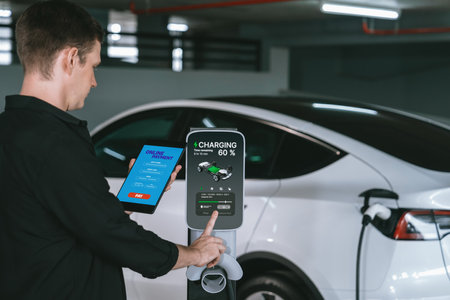1. Introduction
As the automotive industry moves toward a more sustainable future, electric vehicles (EVs) are becoming a major driving force. This shift is particularly evident in the compact car segment, where efficiency, affordability, and innovation are crucial factors for consumers. With advancements in battery technology, charging infrastructure, and government incentives, EVs are now competing head-to-head with traditional gasoline-powered cars.
Why the Shift Toward EVs?
There are several key reasons why automakers and consumers are embracing electric vehicles:
- Environmental Concerns: EVs produce zero tailpipe emissions, reducing air pollution and carbon footprints.
- Lower Operating Costs: Electricity is generally cheaper than gasoline, and maintenance costs are lower since EVs have fewer moving parts.
- Government Incentives: Many states and federal programs offer incentives such as tax credits and rebates for purchasing EVs.
- Improving Technology: Battery efficiency and range continue to improve, making EVs more practical for daily driving.
Impact on Compact Cars
Compact cars have always been a popular choice among urban drivers, commuters, and budget-conscious consumers. The transition from gasoline to electric in this segment brings several changes:
| Factor | Gasoline Cars | Electric Cars |
|---|---|---|
| Fuel/Energy Cost | Higher due to gasoline prices | Lower with electricity costs |
| Maintenance | Frequent oil changes, engine repairs | Fewer moving parts, lower maintenance |
| Range | Longer range, faster refueling | Improving, but charging time varies |
| Environmental Impact | Produces CO2 emissions | Zero tailpipe emissions |
Challenges of EV Adoption
Despite their benefits, EVs still face some challenges in the compact car market:
- Charging Infrastructure: While expanding, charging stations are not as widespread as gas stations.
- Battery Costs: Prices are coming down, but EVs still tend to have a higher upfront cost.
- Range Anxiety: Some drivers worry about running out of charge before reaching a charging station.
Looking Ahead
With continuous improvements in EV technology and infrastructure, the future of compact cars is leaning toward electrification. As battery efficiencies increase, prices drop, and governments push for greener solutions, compact EVs could soon dominate city streets.
2. Performance and Driving Experience
Acceleration
One of the biggest differences between electric and gasoline-powered compact cars is acceleration. Electric cars (EVs) have instant torque, which means they deliver power to the wheels immediately when you press the accelerator. This results in a quicker and smoother response compared to gasoline cars, which rely on internal combustion and gear shifts. EVs generally feel more responsive, especially in city driving where quick bursts of speed are useful.
Handling
Handling in EVs vs. gasoline cars also varies due to weight distribution. Electric cars typically have a low center of gravity because their heavy battery packs are placed under the floor. This improves stability and cornering. On the other hand, gasoline-powered compact cars are usually lighter overall, which can make them feel more nimble in certain driving conditions. While EVs offer a planted and secure feeling on the road, gasoline cars might appeal to drivers who enjoy a more traditional, lighter driving feel.
Overall Driving Experience
Beyond acceleration and handling, the general driving experience differs between these two vehicle types. EVs are incredibly quiet since they lack engine noise, making for a peaceful ride. Gasoline cars, however, provide the familiar engine sound that some drivers enjoy. Additionally, EVs often come with regenerative braking, which slows the car down when you lift off the accelerator, reducing the need to use the brake pedal. This may take some time to get used to but can enhance efficiency.
Quick Comparison
| Feature | Electric Compact Cars | Gasoline Compact Cars |
|---|---|---|
| Acceleration | Instant torque, quick response | Slower off the line due to gear shifts |
| Handling | Low center of gravity, stable | Lighter, can feel more agile |
| Noise Level | Very quiet | Engine noise present |
| Braking | Regenerative braking, less pedal use | Traditional braking system |
Both electric and gasoline compact cars offer unique driving experiences. Whether you prefer the silent, smooth instant response of an EV or the traditional feel of a gasoline-powered car, the choice depends on your driving style and personal preference.

3. Cost and Affordability
When comparing electric vehicles (EVs) and gasoline-powered cars, cost plays a crucial role in decision-making. Lets break down the financial aspects, including upfront costs, maintenance expenses, and long-term savings.
Upfront Costs
EVs generally have higher sticker prices compared to gasoline cars. This is mainly due to the cost of battery technology. However, government incentives, rebates, and tax credits can help lower the initial cost.
| Cost Factor | Electric Vehicles (EVs) | Gasoline Cars |
|---|---|---|
| Average Purchase Price | Higher | Lower |
| Government Incentives | Available in many regions | Limited or none |
| Fuel Costs | Lower (electricity is cheaper than gas) | Higher (gas prices fluctuate) |
Maintenance Expenses
EVs have fewer moving parts than gasoline cars, meaning lower maintenance costs overall. No oil changes, fewer brake replacements, and simpler drivetrains make EVs cheaper to maintain.
| Maintenance Task | Electric Vehicles (EVs) | Gasoline Cars |
|---|---|---|
| Oil Changes | Not needed | Required regularly |
| Brake Maintenance | Less frequent | More frequent |
| Engine Repairs | Minimal (no internal combustion engine) | More frequent and costly |
Long-Term Savings
Despite a higher initial cost, EV owners save money in the long run through reduced fuel and maintenance expenses. Over time, these savings can help offset the higher purchase price.
Charging vs. Refueling
EV charging is generally cheaper than gasoline refueling. Many EV owners also take advantage of home charging, reducing costs further. Public charging stations may have fees, but they are often lower than gas prices.
Resale Value
EV resale values are improving as battery technology advances. While gasoline cars may still hold value in certain markets, the shift toward electrification is increasing demand for used EVs.
Final Thoughts on Cost
The financial choice between an EV and a gasoline car depends on your priorities. If you prioritize lower lifetime costs and cheaper maintenance, an EV is a strong contender. However, if upfront affordability is your main concern, a gasoline car might seem more budget-friendly initially.
4. Environmental Impact
Analysis of Emissions
One of the biggest differences between electric and gasoline compact cars is their impact on the environment. Gas-powered vehicles produce carbon dioxide (CO2) and other pollutants through exhaust emissions, contributing to air pollution and climate change. On the other hand, EVs have zero tailpipe emissions, which significantly reduces their carbon footprint.
Sustainability of Energy Sources
While EVs produce no emissions while driving, their overall environmental impact depends on how the electricity is generated. In regions where electricity comes from renewable sources like wind, solar, or hydro, EVs are much cleaner. However, if the electricity comes from coal or other fossil fuels, the overall emissions might still be significant.
Emissions Comparison
| Vehicle Type | CO2 Emissions (Tailpipe) | CO2 Emissions (Production & Charging) |
|---|---|---|
| Gasoline Car | High | Moderate |
| Electric Car | None | Low to Moderate (depends on energy source) |
The Role of Compact EVs
Compact electric cars offer an excellent solution for reducing emissions, especially in urban areas where shorter trips and stop-and-go traffic are common. These cars are energy-efficient, require less battery power compared to larger EVs, and are easier to charge. As more cities push toward cleaner transportation, compact EVs can play a crucial role in making eco-friendly mobility accessible to more people.
5. Five. Infrastructure and Convenience
Charging Station Availability vs. Gas Stations
One of the biggest concerns for electric vehicle (EV) owners is the availability of charging stations. While gas stations are virtually everywhere, public EV charging stations are still expanding, and coverage varies by region. Charging networks like Tesla Superchargers, Electrify America, and ChargePoint are growing, but they are not as prevalent as traditional gas stations.
Comparison of Charging and Refueling Infrastructure
| Factor | Electric Vehicles | Gasoline Vehicles |
|---|---|---|
| Availability of Stations | Increasing but still limited in some areas | Widely available everywhere |
| Time Required | 30 minutes to several hours | 5 minutes or less |
| Home Refueling | Yes (home charging stations) | No |
Charging and Refueling Time
Refueling a gasoline car takes only a few minutes, while charging an EV takes significantly longer. Even with fast-charging stations, charging can take 30 minutes or more for a significant battery boost. Home charging is convenient but requires several hours for a full charge. This makes gasoline vehicles superior in terms of quick refueling, while EVs offer the convenience of home charging.
Daily Practicality of EVs
For daily commuting, EVs are practical if drivers have consistent access to home or workplace chargers. Many EV owners plug in overnight, waking up with a full battery each morning. However, long-distance travelers may experience “range anxiety” if charging stations are not readily available on their route. Gasoline cars provide the advantage of immediate refueling, making them more suited for spontaneous, long road trips without extensive planning.
Final Thoughts on Infrastructure
While EV infrastructure is improving, it still has gaps compared to the well-established gasoline refueling network. For city driving and daily commutes, EVs are becoming more practical, but gasoline cars still have the upper hand for flexibility and long journeys.
6. Conclusion
Key Takeaways
As the automotive industry evolves, compact cars continue to play a vital role in transportation. Electric and gasoline-powered vehicles each have their strengths and weaknesses, making the choice largely dependent on an individuals needs, budget, and lifestyle.
| Aspect | Electric Cars | Gasoline Cars |
|---|---|---|
| Fuel Cost | Lower (Electricity is cheaper than gas) | Higher (Fluctuating gas prices) |
| Maintenance | Lower (Fewer moving parts) | Higher (Engine maintenance required) |
| Range | Limited (Charging stations needed) | Longer (Easy refueling access) |
| Environmental Impact | Lower emissions | Higher emissions |
The Road Ahead
The future of compact cars is shifting towards electrification, with governments across the world promoting EV adoption through incentives and stricter emissions regulations. Battery technology is improving, leading to longer ranges and faster charging times.
Will Gasoline Cars Still Have a Place?
While EVs are gaining momentum, gasoline cars will likely remain a staple for the foreseeable future due to their convenience, fueling infrastructure, and affordability. Advances in hybrid technology may serve as a bridge between traditional gas engines and fully electric models.
Looking Forward
The choice between electric and gasoline-powered compact cars will continue to evolve as technology advances. In the coming years, consumers can expect more efficient, affordable, and accessible alternatives in both categories, shaping the future of mobility.


